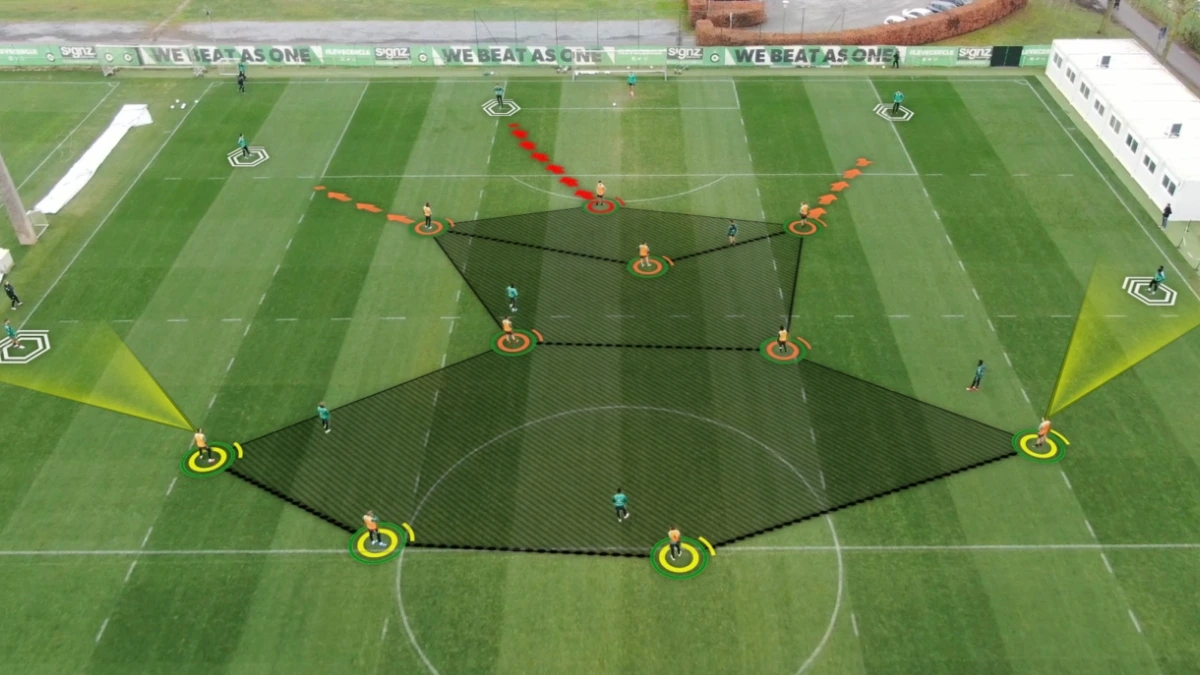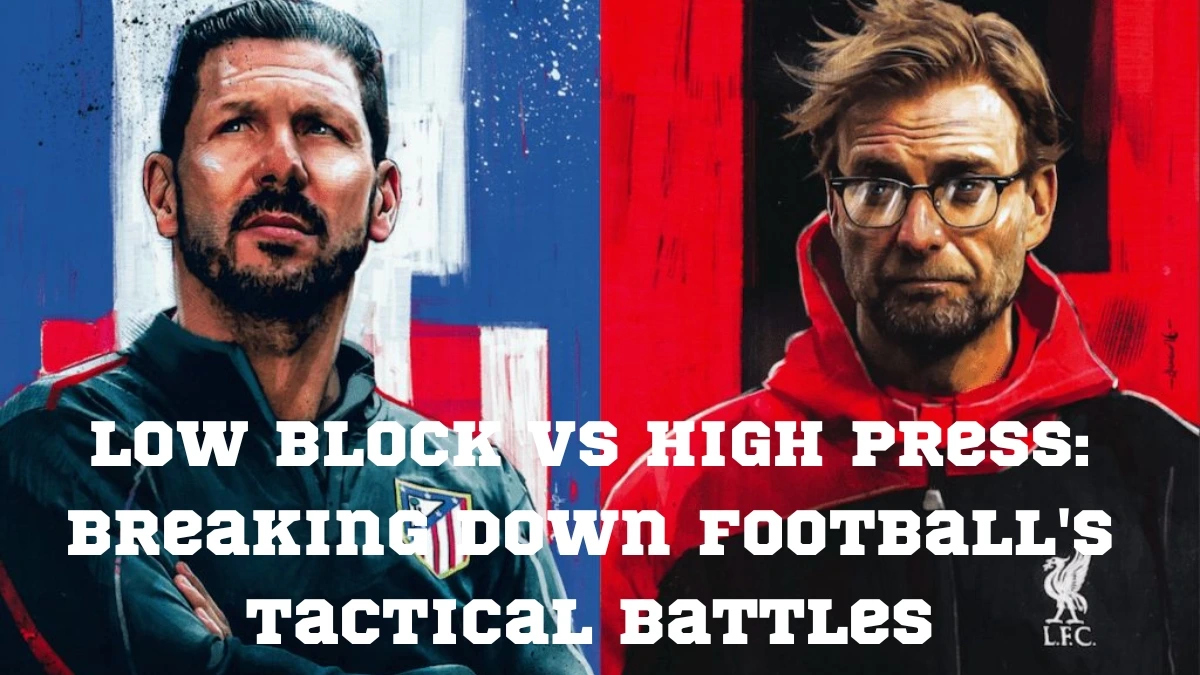High Press vs Low Block: Breaking Down Football’s Tactical Battles- Football isn’t just a game of goals, it’s a game of chess. And in that game, the high press and low block are two of the most common and contrasting moves you’ll see on the board.
From Klopp’s electric gegenpress to Mourinho’s parked bus, these two styles represent the tug-of-war between chaos and control, aggression and patience, risk and reward.
But what exactly are they? Why do some teams press high while others sit back deep? And more importantly, what works better in today’s game?
Let’s break it all down.
What is a High Press?
A high press is all about pinning your opponent in their own half, not letting them breathe on the ball. It’s full-throttle, front-foot football where attackers are the first line of defense.

Main goal? Win the ball high up the pitch before the opponent can build up play. Think of it as putting pressure on the enemy’s castle before they’ve even finished drawing the bridge.
Who Uses It?
- Jurgen Klopp’s Liverpool – textbook gegenpressing.
- Pep Guardiola’s Man City – pressing with precision.
- RB Leipzig, Atalanta – energy, aggression, verticality.
High pressing demands insane fitness, high defensive lines, and players who can read the game in real-time. One wrong step, though, and you’re exposed.
What is a Low Block?
The low block is the opposite: pack your defense, sit deep, absorb pressure, and wait for your moment.
It’s not “anti-football.” It’s just defensive discipline with a counter-attacking edge.

Teams in a low block defend in their own third, often in a 4-4-2 or 5-4-1, keeping things tight between the lines and forcing the opposition to break them down.
Who Uses It?
- Diego Simeone’s Atletico Madrid – masters of defensive structure.
- Jose Mourinho – the king of parking the bus, but winning while doing it.
- Burnley under Sean Dyche – rigid, compact, effective.
Low blocks frustrate. They slow down games, close down spaces, and punish mistakes on the counter. It’s about being patient, not passive.
High Press vs Low Block: The Tactical Showdown
So what happens when a pressing machine meets a defensive fortress?
Here’s the trade-off:
| Tactical Style | Pros | Cons |
| High Press | Win ball higher up, control tempo, force mistakes | Vulnerable to long balls, needs huge energy |
| Low Block | Compact shape, hard to break down, deadly counters | Surrenders possession, invites pressure |
Some of the most thrilling football matches are built around this exact duel. Think:
- Liverpool vs Atletico Madrid (UCL 2020)
- Man City vs Spurs (pretty much every recent encounter)
- Bayern vs PSG – press vs pace
The Hybrid Approach: Flexibility Wins Titles
Modern managers don’t stick to one idea. They adapt.
- Guardiola’s City press high, but will sit in mid-blocks when needed.
- Arteta’s Arsenal switches between high pressing and compact shapes depending on the opponent.
- Ten Hag at United (in theory) wants to press but has often defaulted to a block due to squad issues.
The best teams today know when to press and when to hold. Timing is everything.
Which Is Better
There’s no one-size-fits-all.
If you’ve got pace, fitness, and ball-playing defenders? Go press.
If you’re up against a stronger side and want to frustrate? Sit deep and pounce.
What matters is clarity and execution. You don’t have to be flashy, you just have to be effective.
So next time you watch a game and see a team chasing like mad or sitting like statues, know there’s a chess match in progress. One is trying to bait. The other is trying to break.
And in the end, football always finds its way through.





























